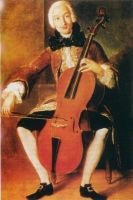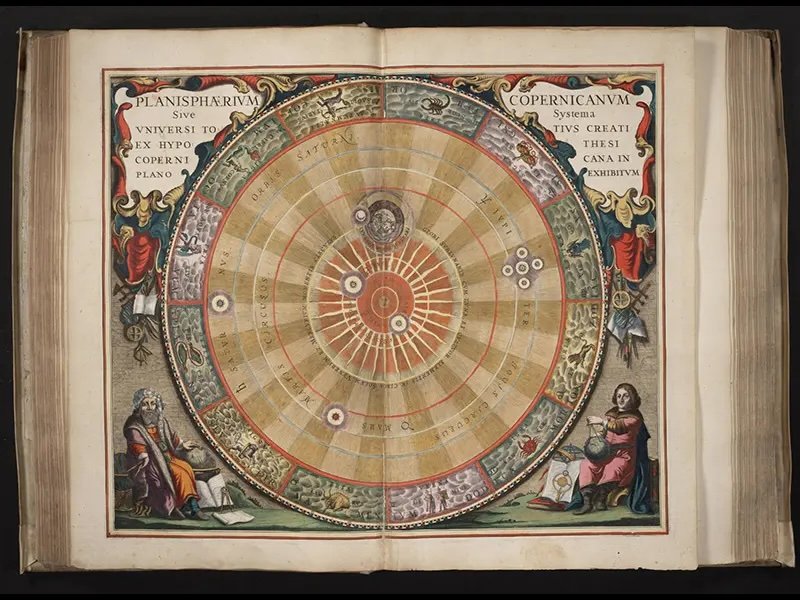FEBRUARY 19
NICOLAI COPERNICUS (Feb. 19, 1473)
February 19 is the birthday of NICOLAI COPERNICUS (1473-1543).
"To know that we know what we know, and to know that we do not know what we do not know, that is true knowledge."
Copernicus' heliocentric theory put the Sun at the center of the solar system. The rarest book in Kansas City's Linda Hall Library is a first edition of "On the Revolutions of the Celestial Spheres" published in 1543 just before Copernicus' death. View it at the link below.
MATTHÄUS SCHWARZ (Feb. 19, 1497)
February 19 is the birthday of the 16th century "influencer" MATTHÄUS SCHWARZ (1497-1574).
Schwarz "was a German accountant, best known for compiling his Klaidungsbüchlein or Trachtenbuch (usually translated as 'Book of Clothes'), a book cataloguing the clothing that he wore between 1520 and 1560. The book has been described as 'the world's first fashion book.'" (Wikipedia)
LUIGI BOCCHERINI (Feb. 19, 1743)
February 19 is the birthday of Italian cellist and composer LUIGI BOCCHERINI (1743-1805).
Boccherini "was an Italian composer and cellist of the Classical era whose music retained a courtly and galante style even while he matured somewhat apart from the major European musical centers. He is best known for a minuet from his String Quintet in E, Op. 11, No. 5 (G 275), and the Cello Concerto in B flat major (G 482). The latter work was long known in the heavily altered version by German cellist and prolific arranger Friedrich Grützmacher, but has recently been restored to its original version.
Boccherini's output also includes several guitar quintets. The final movement of the Guitar Quintet No. 4 in D (G 448) is a fandango, a lively Spanish dance." (Wikipedia)
CONSTANTIN BRÂNCUŞI (Feb. 19, 1876)
February 19 is the birthday of Romanian sculptor, painter and photographer CONSTANTIN BRÂNCUŞI (1876-1957).
"Create like a god, command like a king, work like a slave."
Brâncuși "was a Romanian sculptor, painter and photographer who made his career in France. Considered one of the most influential sculptors of the 20th century and a pioneer of modernism, Brâncuși is called the patriarch of modern sculpture. As a child, he displayed an aptitude for carving wooden farm tools. Formal studies took him first to Bucharest, then to Munich, then to the École des Beaux-Arts in Paris from 1905 to 1907. His art emphasizes clean geometrical lines that balance forms inherent in his materials with the symbolic allusions of representational art. Brâncuși sought inspiration in non-European cultures as a source of primitive exoticism, as did Paul Gauguin, Pablo Picasso, André Derain, and others." (Wikipedia
To see examples of Brâncuși ‘s art, CLICK HERE.
ANDRÉ BRETON (FEB. 19, 1896)
February 19 is the birthday of ANDRÉ BRETON (1896-1966).
"The mind which plunges into Surrealism, relives with burning excitement the best part of childhood."
Breton "was a French writer and poet, the co-founder, leader, and principal theorist of surrealism. His writings include the first Surrealist Manifesto (Manifeste du surréalisme), in which he defined surrealism as 'pure psychic automatism.'
Along with his role as leader of the surrealist movement he is the author of celebrated books such as Nadja and L'Amour fou. Those activities, combined with his critical and theoretical work on writing and the plastic arts, made André Breton a major figure in twentieth-century French art and literature." (Wikipedia)
LUCIO FONTANA (Feb. 19, 1899)
February 19 is the birthday of Argentine-Italian artist LUCIO FONTANA (1899-1968). Fontana founded the Spatialist movement and inspired the Arte Povera modern art movement.
“I do not want to make a painting; I want to open up space, create a new dimension, tie in the cosmos, as it endlessly expands beyond the confining plane of the picture.”
To see examples of Fontana’s art, CLICK HERE.







